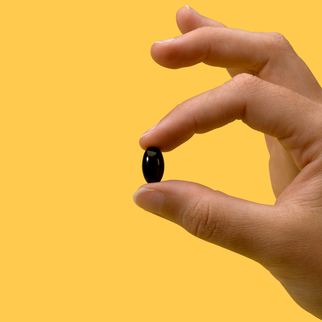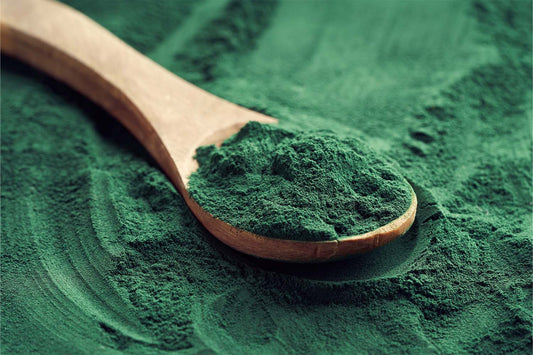We've all felt it: the stiff, achy aftermath of a hard workout, often peaking two days after we've put down the dumbbells. During this agony, you might wonder whether you should forge ahead with your exercise routine or give your aching muscles some rest.
Muscle soreness isn't just an inconvenience; it's a sign from your body that affects your workout routine and overall wellness. Knowing why your muscles ache after a workout, and the proper actions to take, can help you achieve your fitness goals while also respecting your body's boundaries.
Knowing how to respond to muscle soreness can be the difference between effective progress and unintended setbacks — so, let’s get into it!
What Causes Muscle Soreness After Workouts?
If you're regularly active, you're no stranger to the feeling of muscle soreness that can follow a workout. This sensation is most commonly due to a phenomenon known as delayed onset muscle soreness (DOMS).
Contrary to some beliefs, DOMS isn't merely caused by the build-up of lactic acid. Instead, it's the result of microscopic tears in muscle fibers occurring during intense physical activity, especially when you incorporate new exercises or significantly increase your workout intensity. These microscopic tears trigger an inflammatory response, causing pain and stiffness that can peak 24 to 72 hours post-exercise.
When we engage in exercise types like strength training or high-intensity interval training, our muscle tissues experience microtears, particularly during the eccentric (lengthening) phase of muscle contraction. This, combined with the swelling and irritation resulting from the healing process, causes the typical discomfort and stiffness we associate with DOMS.
While DOMS is a common side effect of a new or intense exercise routine, it's essential to distinguish between “good” sore and “bad” sore.
“Good” soreness feels more like a dull, aching sensation that usually starts a day or two after your workout. You might feel it for up to five days, but it gradually decreases during this period. This type of soreness generally means your body is adapting to the new exercise routine, leading to increased strength and endurance over time.
On the other hand, “bad” soreness could be sharp, intense pain that starts during your workout or immediately after. This pain doesn't improve over several days or worsens with movement. Such discomfort could indicate an injury,most likely a sprain or a stress fracture, requiring immediate medical attention.
How Can You Alleviate Sore Muscles?
When it comes to sore muscles, there are several strategies you can use to help ease discomfort and promote recovery. Incorporating warm-ups, cool-downs, foam rolling, active recovery, and allowing sufficient rest are all crucial components of a well-rounded approach to muscle care.
Warm-Ups: Preparing the Muscles for Action
Before diving into a workout, it's essential to warm up your muscles. Warm-ups increase blood flow to the muscles, improve muscle flexibility, and enhance the range of motion.
Engage in some light cardio, such as jogging or cycling, for about five to 10 minutes. This can help elevate your heart rate, loosen up your muscles, and mentally prepare you for the upcoming workout.
Cool-Downs: Gradually Transitioning to Rest
After completing your workout, don't neglect the importance of cooling down. Cool-down exercises help your body transition from the intense workout phase to a state of rest — they gradually lower your heart rate, prevent blood pooling, and promote efficient muscle recovery.
Incorporate gentle stretches targeting the muscle groups you focused on during your workout. This can aid in reducing muscle stiffness, enhancing flexibility, and minimizing that dreaded post-workout muscle soreness.
Foam Rolling: Easing Muscle Tension
Foam rolling, also known as self-myofascial release, is a technique that utilizes a foam roller to apply pressure to specific muscle groups. By targeting tight or sore areas, foam rolling can help alleviate muscle pain and improve functionality.
Roll the foam roller over the affected muscle groups, pausing on any tender or tight spots for about 20 to 30 seconds. This technique helps release muscle tension, break up adhesions, and enhance blood flow to the muscles.
Sufficient Rest: Allowing Your Muscles to Heal
Rest is a critical component of any fitness routine. When you engage in intense workouts, microscopic tears occur in your muscle fibers. During the rest period, these tears repair, and the muscles strengthen.
Giving your body enough time to rest and recover is essential to prevent overuse injuries and optimize muscle growth. Aim for at least 48 hours of recovery time between intense workouts targeting the same muscle groups.
Active Recovery: Moving With Intent
While it may be tempting to take complete rest days when experiencing muscle soreness, engaging in light exercise during your recovery period can actually be more beneficial.
Active recovery involves performing low-intensity workouts or activities that promote blood flow to the muscles without causing further muscle damage. Engaging in activities like swimming, cycling, or gentle yoga can aid in flushing out metabolic waste, reducing muscle discomfort, and facilitating the delivery of essential nutrients for recovery.
Is it Safe to Workout With Sore Muscles?
When experiencing muscle soreness, it's essential to consider the safety aspects of working out.
While it's generally safe to engage in some physical activity with mild muscle soreness, there are risks associated with overtraining and overuse injuries.
Risks of Overtraining
Overtraining occurs when you push your body beyond its limits without sufficient rest and recovery time. This can lead to a range of negative effects, including increased risk of injury, diminished performance, and decreased immune function.
It's important to recognize the signs of overtraining, such as persistent fatigue, decreased motivation, and decreased exercise performance. If you're experiencing these symptoms, it's crucial to prioritize rest and recovery rather than pushing through with intense workouts.
Understanding When Soreness Should Prevent a Workout
While it's generally safe to continue exercising with mild muscle soreness, there are instances when it's best to take a break. If the soreness is severe, accompanied by sharp pain, or limits your range of motion, it may indicate more than just muscle fatigue.
In such cases, listening to your body and allowing proper recovery is important. Consult a sports medicine professional if you're concerned about the severity of your muscle soreness or if you're experiencing persistent pain.
What's the Best Approach To Exercising When Sore?
When faced with muscle soreness, it's crucial to strike a balance between exercise and rest. Here are some key considerations to keep in mind:
Balancing Exercise Intensity and Rest Days
Instead of completely avoiding exercise when you're experiencing muscle soreness, consider adjusting the intensity and focus of your workouts.
Engaging in low-impact cardio activities, such as swimming or cycling, can help increase blood flow and promote recoverywithout placing excessive strain on the sore joints and muscles. Additionally, you can shift the focus of your workouts to different muscle groups, allowing the previously worked muscles to recover.
Listening to Your Body
It's important to distinguish between normal discomfort associated with muscle soreness and pain that may indicate an injury.
Discomfort is to be expected during exercise, especially when targeting specific muscle groups. However, if you experience sharp, persistent, or localized pain, it's crucial to stop the activity and seek guidance from a sports medicine professional.
Pay attention to your body's signals and adjust your workout accordingly to prevent further injury.
The Importance of Professional Advice
Working with a qualified personal trainer can provide professional guidance and support when exercising with muscle soreness. They can help you modify your workouts, tailor exercises to your specific needs, and ensure proper form and technique.
A personal trainer can also assess your individual situation, taking into account factors such as your fitness level, goals, and any pre-existing conditions, to provide tailored recommendations for exercise when sore.
How Can iwi life's Omega-3 Supplements Support Muscle Recovery?
When it comes to muscle recovery, incorporating iwi life's omega-3 supplements into your routine can provide valuable support. These plant-based supplements, derived from algae, offer a range of benefits that can aid in the recovery process and enhance your overall well-being.
Here at iwi life, we specialize in plant-based omega-3 supplements that are designed to promote sustainable nutrition and support various aspects of wellness, including joint health, brain function,eye health, and cholesterol levels. By harnessing the power of algae, iwi life offers a unique and eco-friendly approach to omega-3 supplementation.
By incorporating omega-3 supplements into your routine, you can help soothe the discomfort that arises after a workout and support your body's natural recovery mechanisms.
When it comes to optimizing muscle recovery, a comprehensive approach is key. In addition to proper rest, nutrition plays a vital role. Omega-3 supplements can complement a healthy diet and provide the essential fatty acids that may be lacking, particularly for individuals following plant-based or vegan diets. By ensuring an adequate intake of omega-3s, you provide your body with the necessary building blocks for optimal muscle repair and growth.
The Bottom Line on Pain vs. Gain
Understanding your body's signals and making informed decisions can help you walk the fine line between pushing your limits and risking a serious injury.
By listening to your body and recognizing the difference between healthy soreness and pain from an injury, you can make choices that prioritize your well-being. Incorporating rest days, adjusting exercise intensity, and seeking guidance from professionals, such as personal trainers or sports medicine experts, are all important steps in maintaining a safe and effective workout routine.
In your journey toward better recovery and overall wellness, consider incorporating iwi life's omega-3 supplements into your regimen. These plant-based supplements offer the potential benefits of omega-3 fatty acids, supporting muscle recovery, easing tension, and supporting overall health.
Sources:
Advances in Delayed-Onset Muscle Soreness (DOMS) | NCBI Bookshelf
Stunning Images Show How Muscles Heal Themselves After a Workout | Live Science
Eccentric Muscle Contraction | ScienceDirect Topics
Stress Fractures | NCBI Bookshelf
Why It’s Important To Cool Down After Exercise | Live Science
Healthy Buffs: Making Gains With Your Rest Days | Colorado University Boulder Today
Why Are Rest Days Important? | Live Science
19 Signs of Overtraining: How to Avoid Excess Fatigue and OTS | NSAM



















